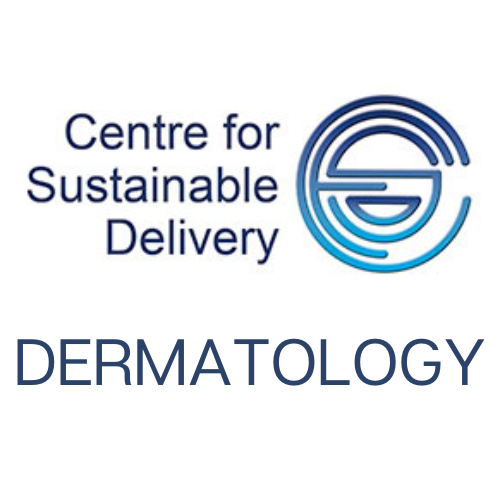Mild: Localised areas of dry skin, infrequent itching (with or without small areas of redness or altered pigmentation). Little impact on everyday activities, sleep and psychosocial wellbeing.
- Prescribe generous amounts of emollients (patient’s preference); advise frequent, liberal, daily use.
- Prescribe a mild topical corticosteroid (e.g. hydrocortisone 1%) for areas of red skin or altered pigmentation. Continue treatment for 48 hours after flare is controlled.
- Consider prescribing a one-month trial of non-sedating antihistamines only in cases of severe itch or urticaria. Review every three months if suitable.
- Do not routinely take a skin swab for microbiological testing in people with secondary bacterial infection of eczema at the initial presentation; In people who are not systemically unwell, do not routinely offer either a topical or oral antibiotic for secondary bacterial infection of eczema.
Moderate: Localised areas of dry skin, frequent itching, redness or altered pigmentation in skin of colour (with or without excoriation and localised skin thickening). Moderate impact on everyday activities and psychosocial wellbeing, frequently disturbed sleep.
- Prescribe generous amounts of emollients (patient’s preference); advise frequent, liberal, daily use.
- Prescribe a moderately potent topical corticosteroid if skin is inflamed (e.g. betamethasone valerate 0.025%, clobetasone butyrate 0.05%). Continue treatment for 48 hours after flare is controlled.
- Prescribe a mild potency topical corticosteroid for delicate face/flexural skin areas (e.g. hydrocortisone 1%); increase to moderate potency corticosteroid if necessary. Continue treatment for maximum of 5 days.
- Prescribe topical calcineurin inhibitors for facial eczema unresponsive to moderate topical corticosteroids e.g. Tacrolimus (0.03% if aged 2-12; 0.1% b.d. if aged over 12) or pimecrolimus.
For frequent flares consider:
- A step-down treatment using lower potency corticosteroid (typically a class down from what is used for flare)
- Intermittent treatment on two consecutive days of the week (weekend) or twice-weekly (e.g. every 3-4 days).
Severe: Widespread areas of dry skin, incessant itching, redness or altered pigmentation in skin of colour (with or without excoriation, extensive skin thickening, bleeding, oozing and cracking). Severe limitation of everyday activities and psychosocial functioning, nightly loss of sleep.
- Prescribe generous amounts of emollients (patient’s preference); advise frequent, liberal, daily use.
- Prescribe a potent topical corticosteroid for inflamed areas, e.g. betamethasone valerate 0.1% or mometasone 0.1%, on the body. Continue treatment for 48 hours after flare is controlled.
Oral corticosteroids should be reserved for use in the treatment of severe flares, often while waiting for referral to secondary care
Secondary infection
- Prescribe systemic antibiotics if patients are systemically unwell with suspected secondary bacterial infection.
- For people with secondary bacterial infection of eczema that is worsening or has not improved, consider sending a skin swab for microbiological testing. (flucloxacillin 1st line; erythromycin if penicillin allergic or resistance to flucloxacillin).
- Eczema herpeticum - Prescribe systemic aciclovir and refer patient as medical emergency if eczema herpeticum (widespread herpes simplex virus) is suspected with atopic eczema (sudden onset of painful, uniform grouped vesicles/erosions).
